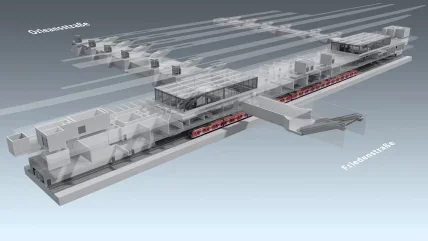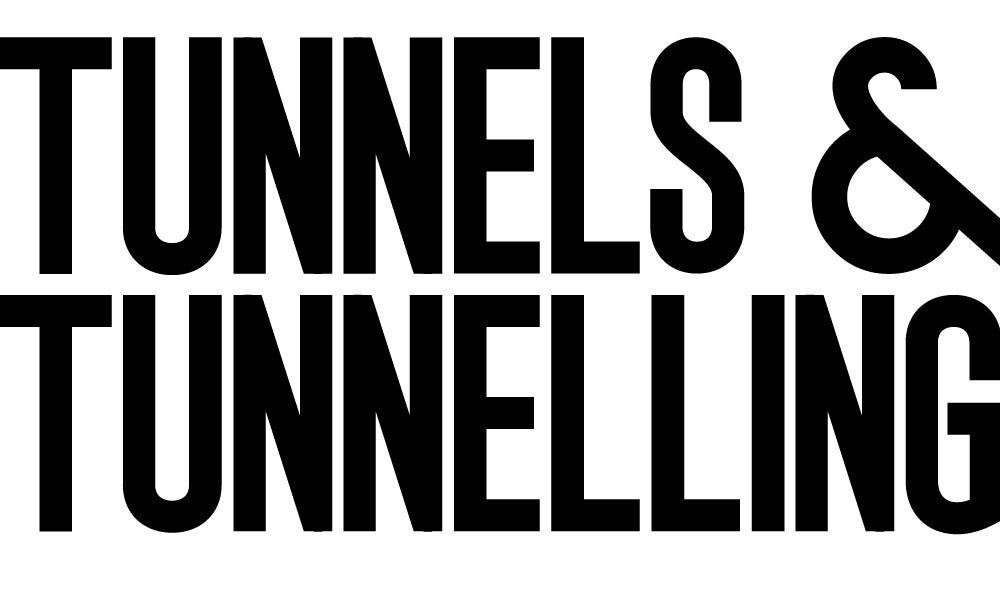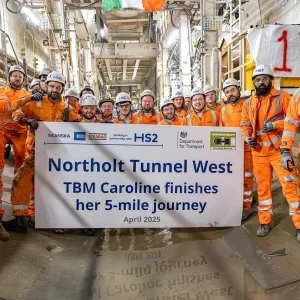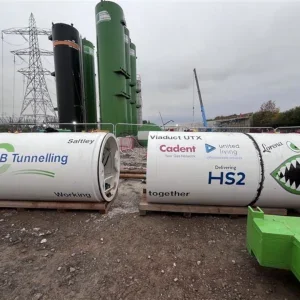
An Implenia and Hochtief joint venture has been awarded the 733 Tunnel Ostbahnhof contract, part of Deutsche Bahn’s Second Core S-Bahn Route in Munich.
The Tunnel Ostbahnhof joint venture, in which each company has a 50% stake, will be responsible for the Ostbahnhof stop and the tunnels between Marienhof and Ostbahnhof.
Construction work begins in June this year and is scheduled to be completed by May 2033.
Across a stretch of around 3km, the joint venture will build two traffic tunnels and a rescue gallery, the München-Ost underground station, eight connecting structures between the main tunnels, a junction structure, several galleries and shafts, as well as shell construction of a new underpass in the Ostbahnhof station.
The project presents technical and logistical challenges, especially because the work will be done while trains continue to travel through the busy Munich hub. The companies say systematic use of BIM technology and proven lean working methods will help the project’s execution.
![]The 11km-long Second Core Route will relieve pressure on the existing 11.3km-long Munich S-Bahn](https://www.tunnelsandtunnelling.com/wp-content/uploads/sites/3/2025/04/Deutsche_Bahn_2-1024x576.webp)
Implenia and Hochtief have been working together on the Second Core S-Bahn Route in Munich since 2018 as part of the Marienhof joint venture that is building the central Marienhof station in the heart of the city. Implenia is the technical lead for the Marienhof joint venture, while Hochtief is the technical lead for the Tunnel Ostbahnhof joint venture. In each case the other partner is taking the commercial lead.
Implenia CEO Jens Vollmar welcomed the new contract.
“Maintaining and developing a functioning transport infrastructure is central to the quality of life in our cities. I’m very happy that Implenia, with its many years of experience and comprehensive expertise, is once again able to contribute actively to improving public transport in Munich,” he said.
With around 840,000 passengers per day, the Munich S-Bahn is one of the largest local public transport systems in Germany. Opened in 1972, the 11.3km-long main line has reached its capacity limit, as all S-Bahn trains must cross the city centre through a single tunnel. The approximately 11km-long Second Core Route is intended to relieve the existing line, serve as an alternative in the event of a fault and significantly shorten travel time from west to east by introducing an express S-Bahn system.







